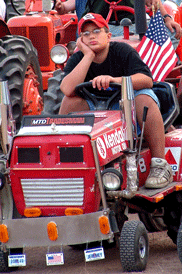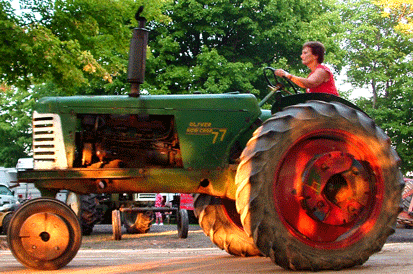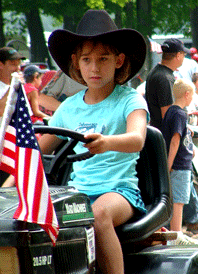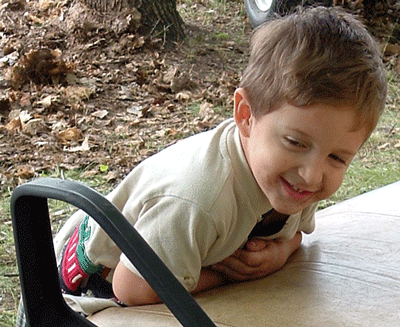 |
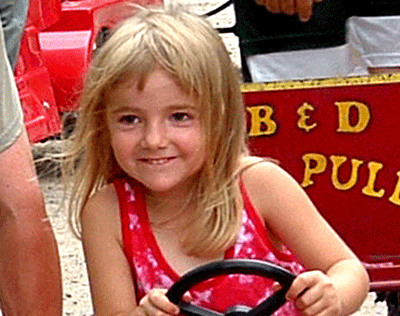 |
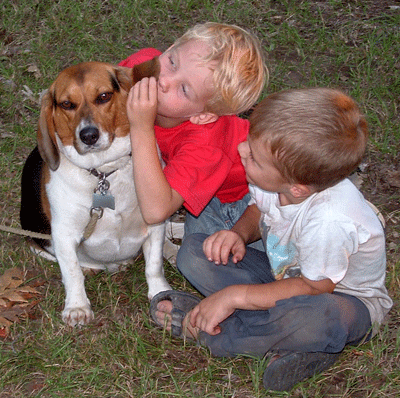 |
Tales of a 21st Century Gypsy
September 6, 2004. Family life, rural Michigan.
Barb’s extended family gets together every year at the Chippewa County Fair, in a neighborhood of campers that they call the ghetto. I had trouble keeping track of everyone there. Barb and her sister Sue and their brother Dave. Dave’s wife Marilyn, who I thought at first was a another sister of Barb and Sue. Sue’s son Jason, his wife Shelley, and their three children Jeremy, Lisa and Evan. Dave and Marilyn’s daughter Kerry and her son Jacob. After that it got confusing. Kerry was accompanied by her partner Jason and his daughters Brittany and Michaela. Her friend Melanie was there too, and Melanie’s daughter Autumn, son Tommy, and partner Tom. Plus Melanie’s friend Andrea, her husband, their two children, and a friend of one of the children – I never got their names. Then there was a family friend Amy, plus her husband, their children, her mother, and perhaps others there as well. Plus Marilyn’s friends Cookie and Becky and their husbands. And two dogs, Max, who came with Barb, and Coco, who came with Jason and Shelley’s family. Plus me, of course.
Someone counted fourteen children in the ghetto, but I’m not sure who the rest were. They were mostly very small, very blonde, and very grubby indeed, as they raced around in dust, fell in mud, dug holes, fell off bikes, sat on toboggans being pulled behind tractors, and generally got into close contact with mother earth at all possible opportunities. The first day I was a stranger, but by the second day six-year-old Lisa seemed to have decided I was okay, and she talked to me and posed for my camera. By the third day she and her little brother Evan climbed into my van to inspect everything they could reach. They wondered about my perfume, so I dabbed some on each of them. They pulled things out of every pocket in my fabric wall of pouches, wanting to know what hose clamps were, what kinds of pills I carry, what the different computer cables were for, why I had so many pairs of eyeglasses, what the straws and chopsticks in my silverware pocket were for. From then on Lisa kept track of my comings and goings, wanting to know why my hair was wet when I came back from swimming in the lake, wanting to come on a bike ride with me (her mother said no), and finally settling for going for a walk all around the fair with me on Sunday. Their parents tried to keep them from bothering me, but I was kind of flattered by their attention.
